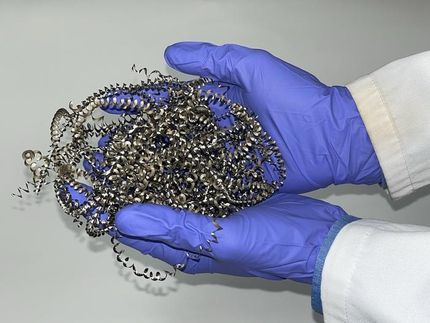Renewable energy obtained from wastewater
Currently, there are treatments in which wastewater can flow out to the river or sea without causing any environmental problems. These technologies however entail high energy costs, mainly in aeration and pumping, and an elevated economic cost in treating the sludge left over from the treatment process.
Wastewater contains an elevated amount of chemical energy in the form of organic contaminants. In order to make use of this energy, researchers from around the world study ways to recover it in the form of hydrogen, a process which efficiently eliminates organic matter from wastewater. It not only reduces the amount of energy needed during the process, it also obtains energy from the produced hydrogen. The key to achieve this is what is known as microbial electrolysis cells (MEC). What is needed is a very special type of bacteria, exoelectrogenic bacteria, capable of oxidising organic material and generating electricity which in turn produces hydrogen. These cells only need a bit of added voltage, much less than what is used for water electrolysis, and which is recovered with the hydrogen, thereby generating clean energy.
Researchers from the Bioelectrochemistry group of the UAB Department of Chemical Engineering have achieved to improve the energetic efficiency of the cells. The experimental results were very positive and demonstrated that these systems would have a market niche at industrial scale. The scientists, coordinated by professors Albert Guisasola and Juan Antonio Baeza, used real wastewater instead of the biodegradable synthetic water used in most experiments, and achieved a biological production of hydrogen and, to a large extent, the recovery of a good part of the energy contained in the residues. To achieve this, researchers selected a set of bacteria capable of transforming complex substrates such as methanol, dairy waste, starch and glycerol, into simpler compounds which could, in turn, be degraded by exoelectrogens.
The results were very positive and high hydrogen production and energy intensity was obtained through the wastewater treatment. In the long term, the MEC fed with dairy wastewater yielded the best results in terms of current intensity (150 amps per cubic metre of reactor), in hydrogen production (0.94 cubic metres of hydrogen per cubic metre of reactor and day), and in recovery of electrons at the cathode (91%); all that with an applied voltage of only 0.8 V. These results are the basis for a potential industrial development of this technology and therefore for the creation of systems capable of producing hydrogen from wastewater treatment.
Most read news
Organizations
Other news from the department science

Get the chemical industry in your inbox
By submitting this form you agree that LUMITOS AG will send you the newsletter(s) selected above by email. Your data will not be passed on to third parties. Your data will be stored and processed in accordance with our data protection regulations. LUMITOS may contact you by email for the purpose of advertising or market and opinion surveys. You can revoke your consent at any time without giving reasons to LUMITOS AG, Ernst-Augustin-Str. 2, 12489 Berlin, Germany or by e-mail at revoke@lumitos.com with effect for the future. In addition, each email contains a link to unsubscribe from the corresponding newsletter.




















































